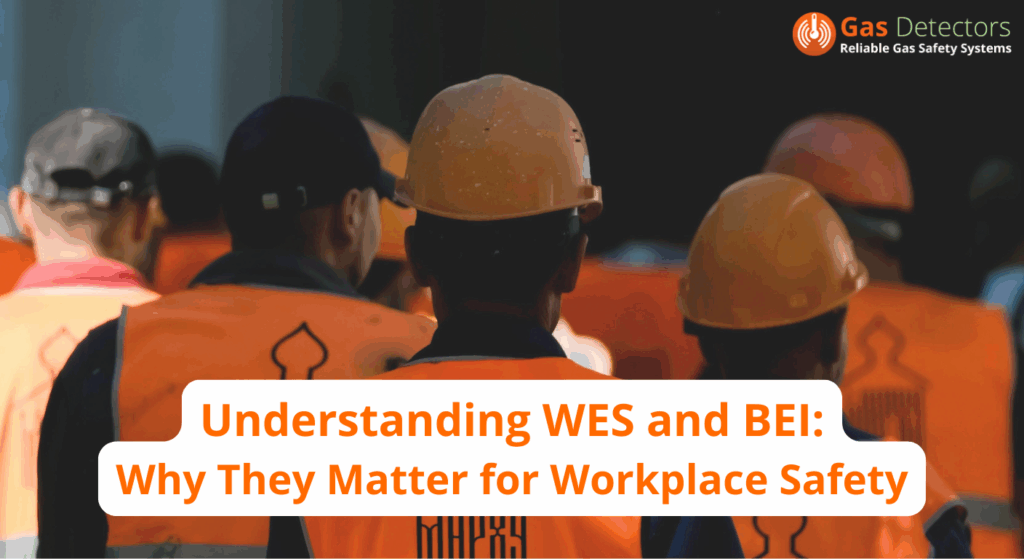
What are WES and BEI — and why do they matter? Learn how Workplace Exposure Standards and Biological Exposure Indices protect workers from harmful gases and chemicals.
You may or may not have come across the terms WES and BEI. Here’s a brief explanation of what they mean and why they’re so important for workplace health and safety.
What is WES?
Workplace Exposure Standards (WES) are values that refer to the airborne concentration of substances at which nearly all workers can be repeatedly exposed, day after day, without adverse health effects.
WES values are used to set alarm levels on personal and fixed gas detectors, helping ensure that workers are warned before dangerous concentrations are reached.
What is BEI?
Biological Exposure Indices (BEI) are guidance values for assessing biological monitoring results. Biological monitoring measures the concentration of a substance—or its breakdown products—in blood, urine, or even exhaled air. The results are compared against BEI values for the specific substance.
BEIs help identify how much of a chemical is absorbed into the body, not just what is present in the air.
Why Exposure Monitoring Matters
Exposure occurs when a worker comes into contact with a hazardous chemical through inhalation, ingestion, or skin absorption. It also includes potential or accidental exposure.
To protect workers, WorkSafe NZ regularly reviews and updates published exposure levels for substances. The most recent update was the 13th Edition of the Workplace Exposure Standards and Biological Exposure Indices, published in April 2022.
Notable changes included adjustments to:
- Carbon Monoxide
- Formaldehyde
- Methyl Bromide
- Toluene
These changes are part of WorkSafe’s strategic plan to reduce workplace-related illnesses and improve health outcomes.
Entec’s Response to WES & BEI Updates
At Entec Services, our Gas Detection team closely monitors updates to WES and BEI values. The new data has already been built into our internal systems and applied to all new and serviced equipment through our calibration lab.
Our technical team understands the importance of accurate gas detection — because getting your team home safe at night is what matters most.
If you’re unsure about the current alarm settings on your personal gas monitors, contact our team for expert advice.
📞 Tel: 06 2621280
🌐 www.gasdetectors.co.nz | www.entec.co.nz
🎥 Check out our videos:
Key Terms in Workplace Exposure Standards
- WES – Workplace Exposure Standard
- TWA – Time Weighted Average: Average exposure over an 8-hour shift.
- STEL – Short Term Exposure Limit: Maximum permitted exposure in a 15-minute period.
- Ceiling: The maximum concentration that must never be exceeded.
- BEI – Biological Exposure Index: Amount of a substance detected in blood, urine, or exhaled air.
- PES – Prescribed Exposure Standard: A legally prescribed WES or BEI designed to protect workers.
Exposure values are usually expressed as milligrams per cubic metre (mg/m³) or parts per million (ppm).
Why It Matters
Understanding WES and BEI is critical for protecting workers from long-term health effects caused by hazardous substances. With regular updates from WorkSafe and proactive support from Entec, you can be confident your gas detection systems are accurate, compliant, and ready to protect your workforce.